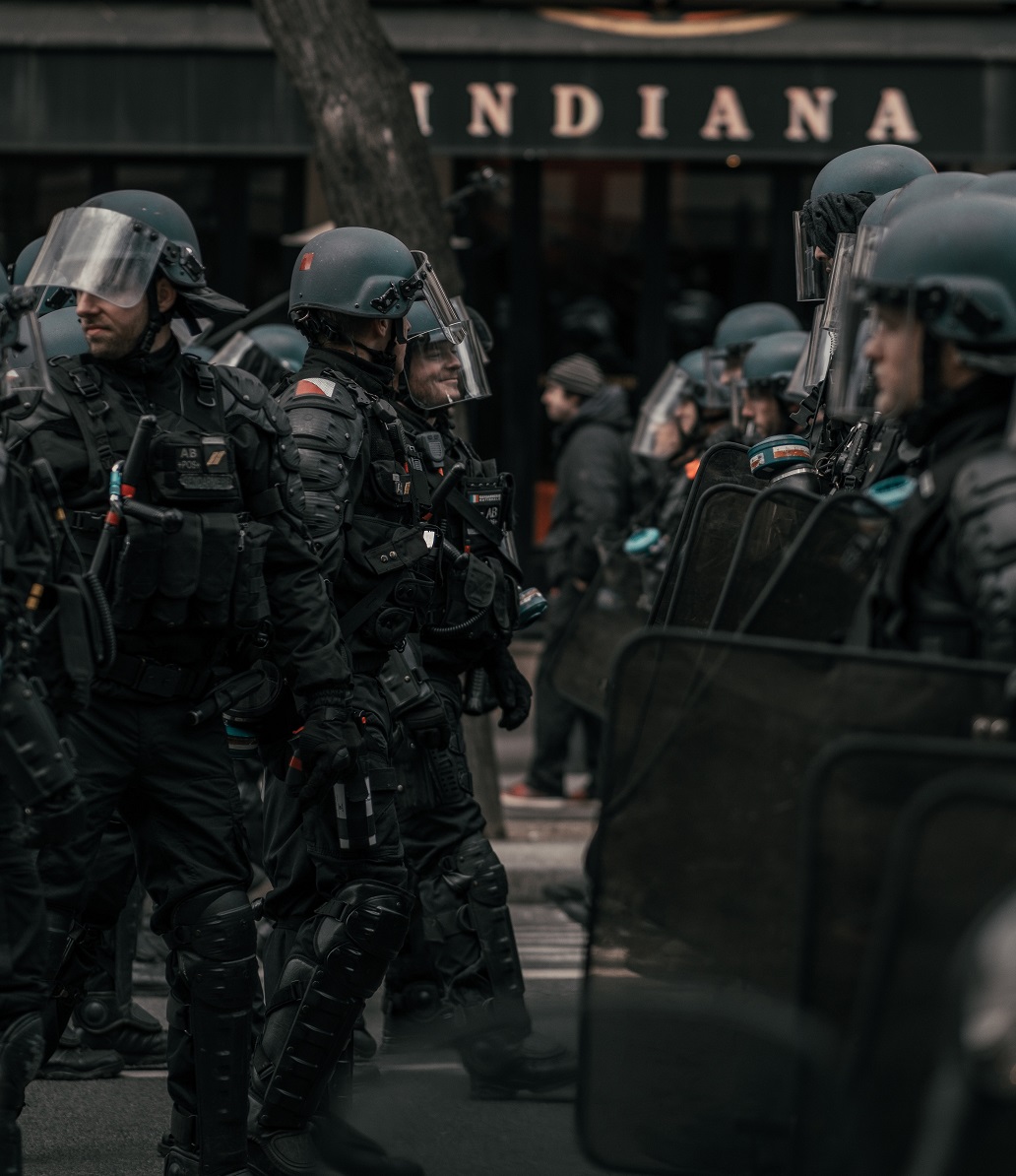A riot shield should protect the user from the neck down if used correctly. Typically, shields are either round or rectangular in design, with lengths ranging from 36 to 48 inches (91 to 122 cm) and widths ranging from a few inches to several feet. Most shields have a slightly cylindrical shape, and their handles are constructed of metal or reinforced plastic and attached to the shield with adhesive or grommets. The shield’s handle design allows a closed fist to grip it quickly, and the shield’s forearm resting area will have padding and Velcro strapping to keep it in place.
Some shields can connect with both sides of the carrier, creating a more formidable shield wall, and some contain storage space for a baton or other non-lethal weapon. The sort of shield that enforcement agents will employ depends on the nature of the mission, its goals, available resources, and departmental budgets. Most riot shield materials include clear polycarbonate with a thickness of 4 to 6 millimeters (0.16-0.24 in). Most shields are not bulletproof, but they can withstand bullet impact. Some anti-riot shields are effective against handgun and shotgun rounds. Shotgun rounds have a lower muzzle velocity and thus pose less of a threat than higher-velocity rifle rounds. On the other hand, ballistic shields are preferable whenever enforcement officers anticipate the use of heavy weaponry by demonstrators.
There are concave shields for pinning down and handcuffing rioters or prisoners and electric shields that administer a non-lethal electric shock to any person the shield contacts. Electric riots shields, whose production began in the ’80s, have metal strips attached to the polycarbonate outside. The carrier sends an electric shock through the strips by pressing a button on the side of the device. Electric shields have killed several people because they produce a low-frequency sound that resonates with the respiratory tract, making it hard to breathe.
For more articles, please click here.
